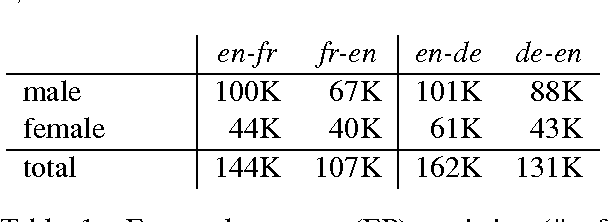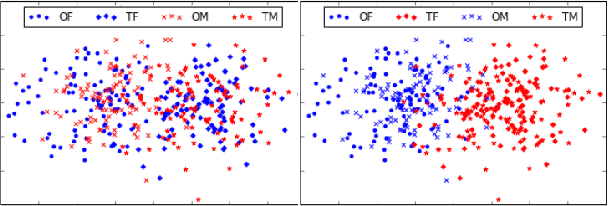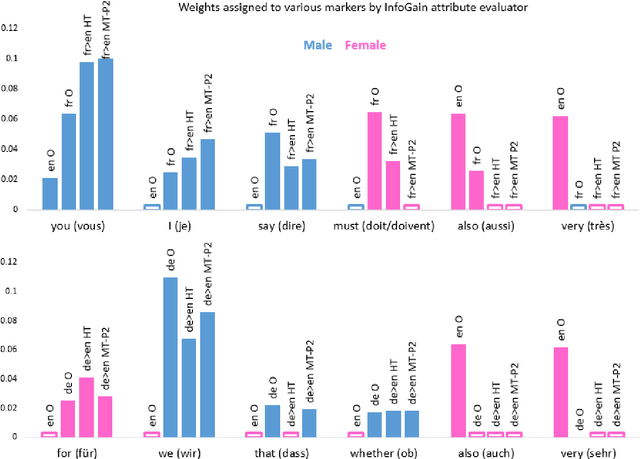Personalized Machine Translation: Preserving Original Author Traits
Paper and Code
Jan 12, 2017



The language that we produce reflects our personality, and various personal and demographic characteristics can be detected in natural language texts. We focus on one particular personal trait of the author, gender, and study how it is manifested in original texts and in translations. We show that author's gender has a powerful, clear signal in originals texts, but this signal is obfuscated in human and machine translation. We then propose simple domain-adaptation techniques that help retain the original gender traits in the translation, without harming the quality of the translation, thereby creating more personalized machine translation systems.
* EACL 2017, 11 pages
 Add to Chrome
Add to Chrome Add to Firefox
Add to Firefox Add to Edge
Add to Edge